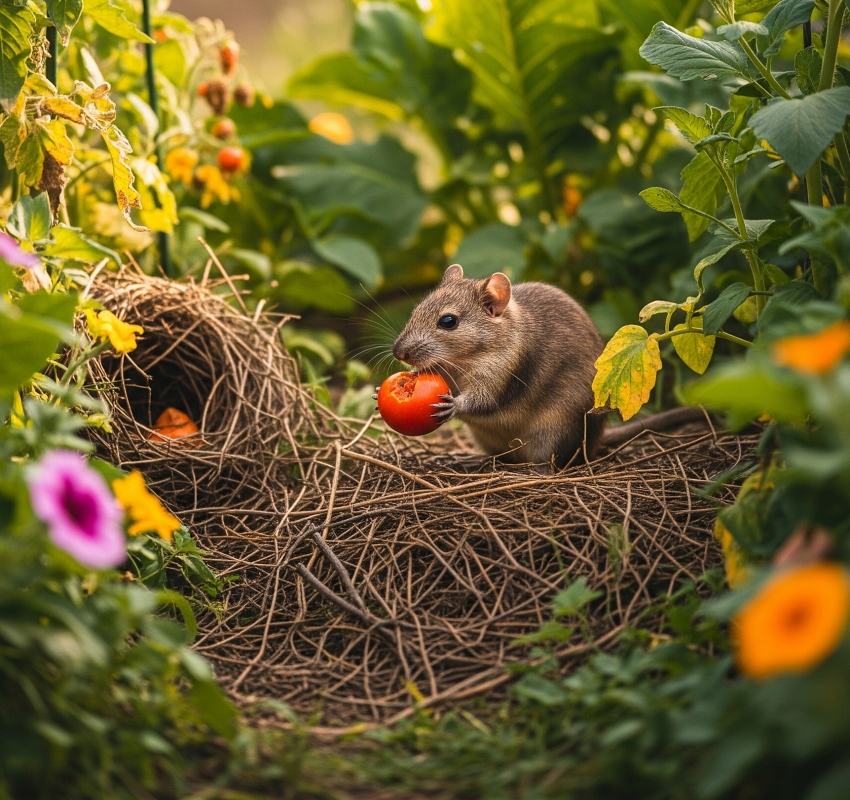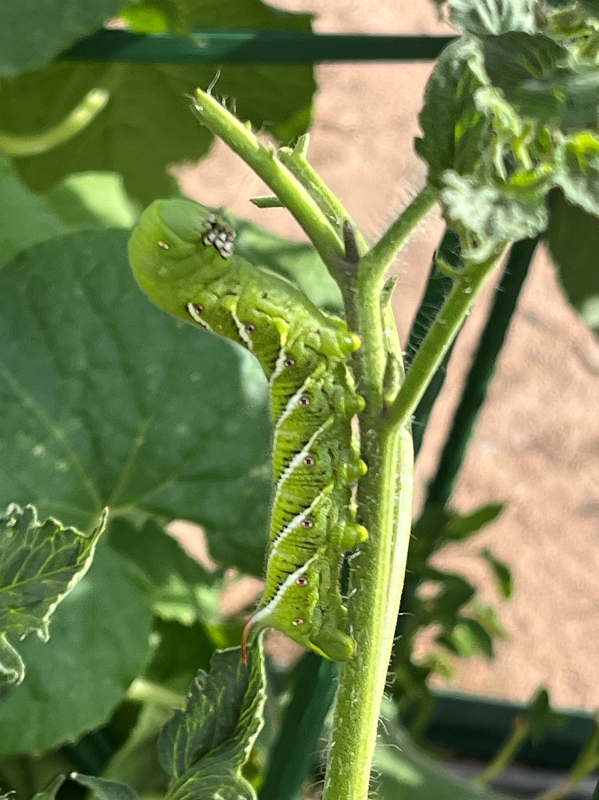When critters invade your garden, it can feel like a losing battle. But with the right approach, you can protect your plants and enjoy a truly stunning garden here in Prescott. Let’s tackle the biggest offenders, from javelina to those pesky tomato worms.
Javelina & Pack Rats: The Garden Vandals
Javelina and pack rats are common complaints for local gardeners. These aren’t just a nuisance; they can decimate a garden overnight. The best defense is exclusion.
Javelina: These pig-like mammals are relentless foragers. They’ll root up anything, from newly planted flowers to established shrubs, often causing more damage by trampling than by eating.
- Fencing is your best friend. A sturdy fence, at least 3 feet high, with the bottom buried 6 inches deep, is essential. Javelina are strong and persistent. Don’t skimp on materials. Chain link or hog panel fencing works well.
- Electric fencing provides an additional layer of protection, particularly for larger areas. A low-voltage electric wire strung along the bottom of an existing fence or as a standalone barrier can effectively deter them.
- Repellents are a temporary fix at best. While some gardeners swear by things like blood meal or commercial animal repellents, their effectiveness is often short-lived, especially after rain or irrigation. Rely on physical barriers for long-term success.

Pack Rats: These rodents are notorious for building large, messy nests and, more importantly, for chewing on plants, especially cacti and succulents, as well as garden hoses and wiring.
- Cleanliness is key. Remove brush piles, old wood, and any other items that provide shelter. Pack rats love clutter.
- Trapping: Live traps or snap traps can be effective for individual pack rats. Bait with peanut butter, pumpkin seed, nuts, or dried fruit. Always check traps regularly.
- Protect vulnerable plants. For prized specimens, consider surrounding them with hardware cloth cages, buried a few inches into the soil.

Grasshoppers: The Leaping Destroyers
Grasshoppers can appear suddenly and consume a surprising amount of foliage in a short time. They are particularly active during warm, dry periods.
- Early intervention is crucial. Small grasshoppers are easier to control. Once they mature and develop wings, they become significantly more challenging to manage.
- Hand-picking: For minor infestations, especially in the mornings when the pests are sluggish, hand-picking and dropping them into a bucket of soapy water is an effective method
- Insecticides: Watters Turf Ranger is spread like a fertilizer across large properties for severe infestations. Rain or irrigation activates the bug control, which also works well against small black ants, pill bugs, and earwigs. One application will control most pests.

Tomato Worms: The Green Gobblers
The most common “tomato worm” in our area is the tomato hornworm. This large, green caterpillar blends in perfectly with the foliage of the tomato plant. They can defoliate a plant quickly.
- Vigilance is key. Inspect your tomato plants daily, especially on the undersides of leaves. Look for chewed leaves and their tell-tale black droppings, or frass.
- Hand-picking is highly effective. Hornworms are large, and once you spot them, they are easy to remove. Simply pick them off and drop them into a bucket of soapy water.
- Look for parasitic wasps. Sometimes, you’ll see hornworms with small, white, rice-like cocoons attached to their bodies. These are the cocoons of parasitic braconid wasps, which are beneficial insects that kill the hornworm. If you find one, leave it be; the wasps will emerge and help control future hornworm populations.
- Bacillus thuringiensis (Bt): This is a naturally occurring bacterium that is highly effective against caterpillars, including hornworms, but safe for humans, pets, and beneficial insects. It works by paralyzing the caterpillar’s digestive system when they ingest it. Spray it on the foliage where hornworms are feeding. Reapply after rain.
Growing a stunning Prescott garden means being prepared for these common pests. By understanding their habits and applying these best practices, you’ll have the tools to protect your plants and enjoy a truly bug-free bloom season.

August Garden Classes Every Saturday @ Watters Garden Center
Join us every Saturday morning at 9:30 AM for our free garden classes, right here at Watters Garden Center on Iron Springs Road in Prescott. August is packed with valuable insights to help your garden thrive!

August 2 @ 9:30 Fast Growing Trees for Quick Landscapes – If you’re looking for trees that can provide quick shade, establish privacy screens in a hurry, or simply fill out your garden fast, you’re in the right place!

August 9 @ 9:30 Bug Free Blooms for Stunning Gardens – You’ll have the tools needed to grow a stunning Prescott garden.

August 16 @ 9:30 – Hot Weather Blooms for Vibrant Prescott Gardens
We’re diving deep into growing blooming summer favorites: the elegant Crape Myrtle and the dazzling Hibiscus.

August 23 @ 9:30 – From Newbie to Garden Pro in Arizona
We’ll cover everything from understanding Arizona’s garden zones and those crucial frost dates to best watering practices and soil preparation that works for our local conditions.
Come learn something new and connect with fellow gardeners!
Until next week, I’ll be helping gardeners with sick plants here at Watters Garden Center.
Ken Lain can be found throughout the week at Watters Garden Center, 1815 Iron Springs Rd in Prescott, or contacted through his websites at WattersGardenCenter.com or Top10Plants.com.
How useful was this article ?
Click on a star to rate it!
Average rating 0 / 5. Vote count: 0
No votes so far! Be the first to rate this post.
We are sorry that this post was not too useful for you!
Let us improve this post!
Tell us how we can improve this post?















